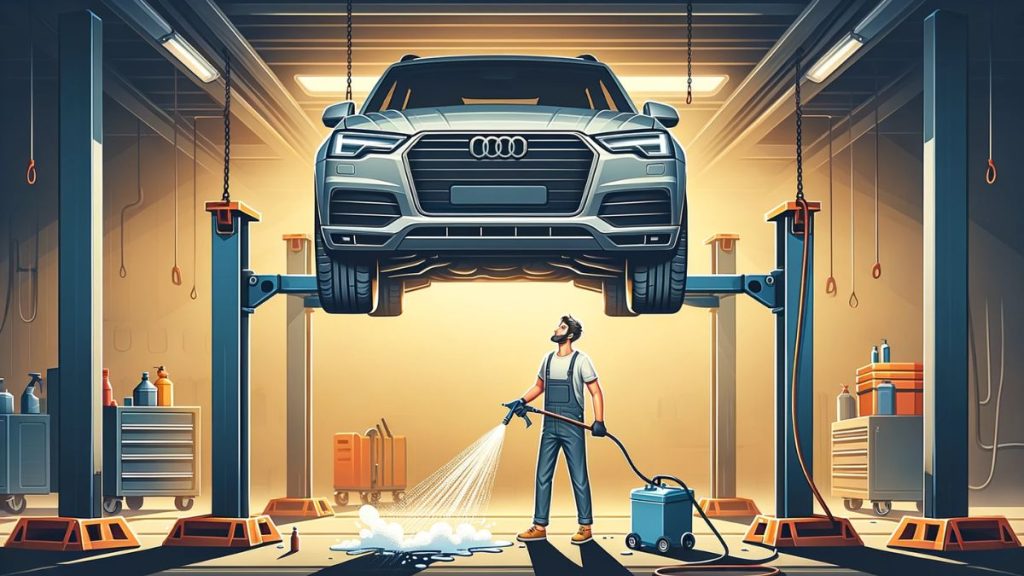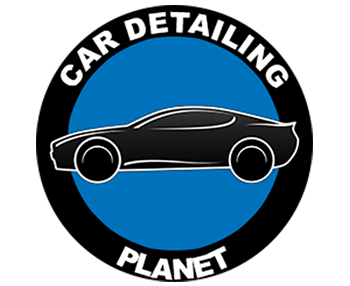
Washing a car undercarriage is safe as long as you follow proper guidelines. In this post, I’ll show you all the steps I do when washing a car’s undercarriage so you can repeat that on your car as well.
This guide is much easier than other guides on the internet because you don’t need jack stands to lift the car, so I’m sure it’ll be easier for all of you guys to clean the car’s undercarriage my way.
Undercarriage Car Wash: Step by Step Guide
Without further ado, let’s see the step-by-step guide for washing the undercarriage on cars, trucks, etc. Also, I’ll try to make it as simple as possible, so you don’t need a lot of additional equipment such as car jacks, etc. You’ll only need a few pieces of equipment, and you’re good to go.
What You’ll Need:
- Pressure washer
- Car undercarriage cleaner
- All-purpose cleaner (optional)
- If you don’t have a pressure washer and a car undercarriage cleaner, you can use a garden hose, too.
1. Prepare The Equipment
Before you start washing, you should ensure that all the equipment is properly connected and that it’s working.
Connect the pressure washer to the water source, and then connect the undercarriage cleaner to the pressure washer wand. When you connect it, try running it to check if everything works fine.
If you don’t have a pressure washer and the undercarriage cleaner, just prepare a garden hose, but also prepare yourself to end up wet since you’ll have to bend down to grasp all the undercarriage parts (that’s the main reason why I recommend using specialized tools such as undercarriage washer).
2. Pre-treat the Underbody With an APC (Optional)
In most cases, using only plain water is enough to clean the dirty bottom of your car. However, if your car is extremely dirty, you can pre-treat the undercarriage with an all-purpose cleaner.
It may be hard to reach all the areas, but usually, it’s easy to spray an APC on the most important areas, such as wheel wells, suspension, springs, exhaust, etc.
After applying, let the APC sit there for a minute or two, and then proceed with the washing.
3. Wash The Undercarriage
Now that everything’s set up, you should power on your tools and get to the work.
By using an undercarriage cleaner, slowly go around the car and thoroughly wash each part of the undercarriage. Start from the edges and slowly push the cleaner to the middle of the car.
So, from one side, you’ll be reaching the middle of the vehicle only, and then you should go around the car and do the same, so in the end, everything is completely clean.
Pay specific attention to wheels and surrounding areas because that’s where most of the dirt is trapped.
TIP: I like to do the whole process twice since the first pass will soften the dirt, grime, and salt, while the second pass will completely remove it, leaving the surface perfectly clean.
For those of you who don’t have the needed equipment, you can use a garden hose gun nozzle and wash the undercarriage with it. You’ll probably be wet by doing so, but I suppose it’s not a big deal.
4. Let It Dry
After washing the undercarriage, I suggest you let your car dry for around 30 minutes. That should be enough time for all the water to get out of the crevices, especially some electric parts such as ABS sensors, etc.
There’s a very little chance that you could screw something up by driving the car immediately, but an extra step of prevention will remove all possibilities of causing any damage to your vehicle.
5. Apply Protection To the Underbody
The last step you should do when washing a car’s undercarriage is to apply some kind of protection. This will help prevent road salt and other contaminants from damaging car parts in the undercarriage, but will also prevent plastics around wheel wells from fading.
While there are plenty of professional undercoatings, I prefer using simple products such as Chemical Guys Bare Bones. It’s a beginner-friendly product that gives more than enough protection to the car’s undercarriage.
Here’s how I apply it:
- Make sure that the car underbody is dry.
- Spray on all areas you’d like to protect (I spray the whole undercarriage with it).
- Let it sit for 20-30 minutes before driving the car.
And now you have a clean and protected car’s undercarriage that won’t rust get dirty so easily, and plastics won’t fade quickly.
Why It’s Important To Use The Undercarriage Cleaner/Washer?
No products found.
Undercarriage cleaners are specifically created for washing car chassis. They’re completely safe for both electrical and mechanical parts, and they make the whole washing process easier.
Without them, it’s much harder to wash the undercarriage since you’ll have to bend down and reach all of the undercarriage areas with your hand and a garden hose. Together with back pain, you’ll probably end up all wet and dirty from the water. And by using an undercarriage cleaner, you won’t have any of these problems.
They’re not expensive, and I think it’s completely worth spending 20-40 bucks for an addon that’ll help you clean and maintain your car and will also last for years.
Frequently Asked Questions
As usual, there are many questions people usually ask about washing the undercarriage, and I decided to give you an answer for the most common ones.
Most automatic car washes don’t have the option to clean the car’s undercarriage. The ones that have that option are pretty hard to find.
During winter, I suggest you wash the car undercarriage at least once a month. During summer, you can wash it every two to three months.
I don’t suggest using a pressure washer only since it’s usually too strong (too much PSI), which can lead to some damage to the car’s suspension system, drivetrain, electronics, etc. However, if you still decide to use a pressure washer, make sure to point the wand at an angle (20-30 degrees), and keep it as far away from the undercarriage as you can.
In my opinion, using plain water only is completely enough to wash the undercarriage. However, I suggest using an APC (All-purpose cleaner) for better results. Just spray it over the undercarriage, let it sit for a minute or two, and then proceed with the wash.
Well, you can’t prevent water from hitting electrically sensitive areas. Luckily, the electronics on the undercarriage are made to withstand water. As long as you don’t use a high-pressure washer to directly wash the undercarriage, you won’t make any damage.
Final Thoughts
There are many benefits to washing the undercarriage of your car:
- Car parts won’t rust because they’ll be cleaner all the time.
- Plastics in the underbody won’t fade so quickly.
- You’ll remove all the road salt and other contaminants from the car.
- With a clean car undercarriage, you’ll more easily spot some potential mechanical problems on your vehicle, such as worn joints, etc.
- Cars with clean undercarriage will pass the vehicle inspection more easily.
I hope that now you realize the importance of washing the underbody of your car, and more importantly, now you know how to do it the right way. I hope this guide was helpful!
